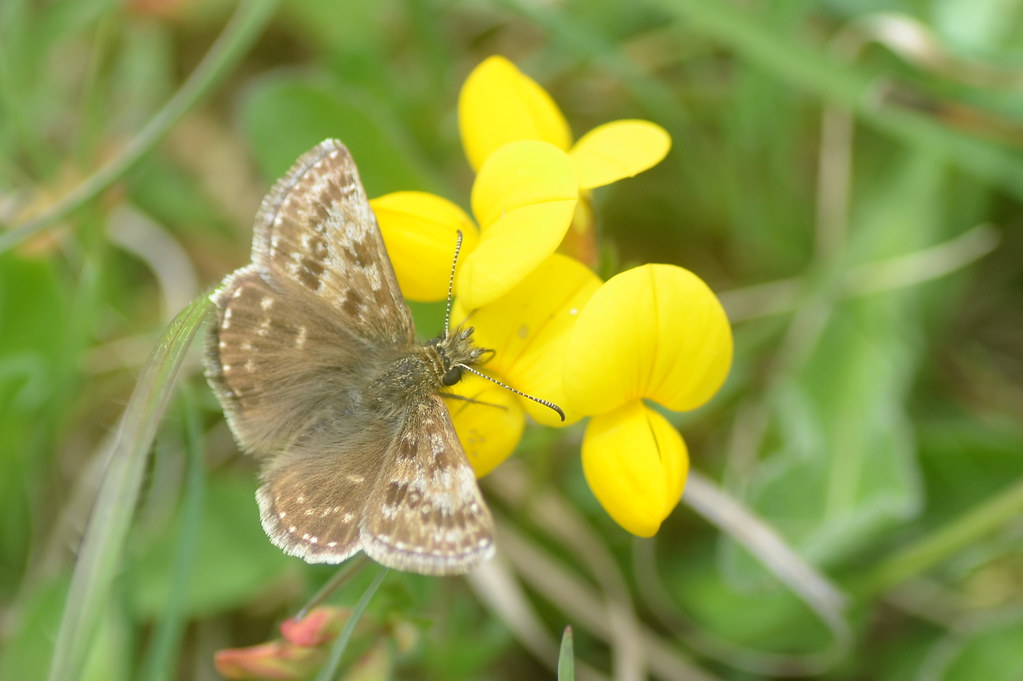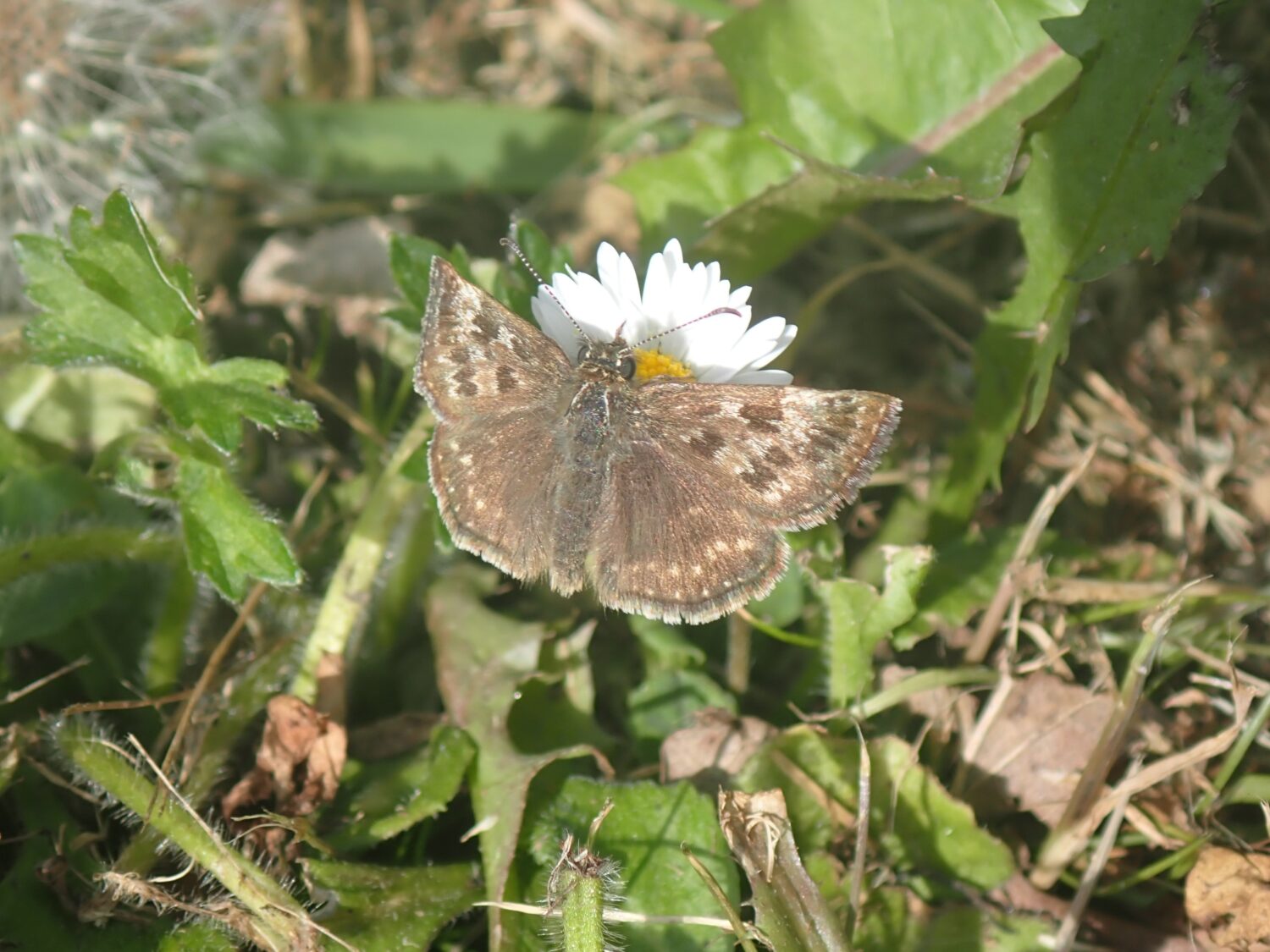(Erynnis tages)
A recent arrival to the reserve, this subtle butterfly can be found in meadow habitats.
Fast facts
- Common name(s)
- Dingy Skipper
- Scientific name
- Erynnis tages
- Habitat
- Meadows
- Diet
- Nectar (adults) and Bird’s-foot Trefoil (caterpillar foodplant)
- When to see it
- May – June
Identification
Adults of the Dingy Skipper have grey-brown upper-wings and mottled markings. Giving rise to its common name, the upper-wings fade and the scales are lost as the butterfly ages.
Did you know?
Gosforth Nature Reserve’s butterflies are closely monitored by volunteers. Since a monitoring transect was set up in 2014, around 3000 individuals of 20 butterfly species have been recorded using the reserve’s woodland and meadow.

Ecology and behaviour
Females lay their eggs on the leaves of Bird’s-foot Trefoil. After a fortnight, the eggs hatch and the resulting caterpillars will feed on the leaves. Once fully grown, the caterpillars overwinter to pupate the following spring and emerge as adults in May.
This species has a low, darting flight and at rest, it is most often found basking on bare ground. Individuals can also be found roosting together on dead flower heads. Roosting individuals wrap their wings around the flower head, giving a moth-like appearance.
An uncommon butterfly that has experienced declines both regionally and nationally, the meadows at the reserve are of great importance for this species.
61%
Decline across the UK
29 mm
Maximum wing span
2019
First recorded at Gosforth Nature Reserve
At Gosforth Nature Reserve
The Dingy Skipper prefers the open meadows of the reserve where its caterpillar foodplant also grows, Bird’s-foot Trefoil. Timed with the flowering of its foodplant, you will find this species on the wing from May to June at the reserve. While this species isn’t a big nectar feeder, individuals can be found nectaring on Bird’s-foot Trefoil.
First recorded in 2019, meadow management has increased the availability of Bird’s-foot Trefoil in more recent years. This is believed to have encouraged its arrival and in 2020, individuals were recorded in increased numbers. This is a positive sign that the Dingy Skipper is establishing a population at the reserve and will become a more common encounter in the summer.

The Dingy Skipper is often seen ‘at rest’ with its wings splayed